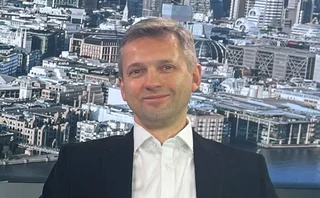
How Michael Spector left his mark on quantitative finance
Physicist trained in Soviet scientific centres found elegant solutions to complex problems

Michael Spector, who passed away on May 27, 2022, was among the most creative researchers in quantitative finance, with a body of work that demonstrates his boundless intellect and curiosity. He was also a close friend and dear colleague, whose mathematical erudition and depth of knowledge – a product of his education in the Soviet scientific centres – inspired admiration in all who knew him.
Spector graduated from the Moscow Institute of Physics and Technology and received his PhD in theoretical physics from the Budker Institute of Nuclear Physics, Novosibirsk. Early in his career, he specialised in theoretical physics, working at research centres and universities in Russia, Israel and the US. His publications on plasma physics, hydrodynamics, turbulence and nonlinear wave dynamics left an indelible mark on the field. Among them are his paper on the stability of shock waves, which was cited in the ‘Fluid Mechanics’ volume of the famous Landau-Lifshitz Course of Theoretical Physics, and a seminal paper on the stability of stationary waves in the framework of the nonlinear string equation.
Then, in 2006, he reached a career crossroads. His curiosity and desire to be challenged led him to quantitative finance. As a member of Numerix’s quantitative research team, he demonstrated an uncanny ability to take a complex problem and break it down into a simple and elegant solution. It would become a hallmark of his work.
Spector made major contributions to the pricing of exotic options. He generalised the Vecer approach from Asian options to lookback options to reduce the dimensionality of the problem. He extended the known closed-form formulas for pricing and computing the Greeks for a broad range of barrier options to two-dimensional and three-dimensional integrals that allow for fast calculations.
He then turned his attention to interest rate derivatives, publishing his first paper on generalised short-rate models with Gaussian underlying in 2011. These models are simple enough for numerical implementation but also have a smile/skew flexibility. The only missing thing was the fast analytics for the volatility calibration. In this paper, he derived fast analytical approximations of swaption prices for these models.
Spector also made important contributions to research related to the SABR model. His deep knowledge of differential equations led to a closed-form exact solution for the zero correlation SABR model. The non-zero correlation case was approximated by the Model Mapping technique. Importantly, the approximation (and the exact result) delivered accurate wings of the smile.
Our second text on the subject was devoted to constant elasticity of variance (CEV) models with a general stochastic volatility, uncorrelated with the underlying, where we used a representation of the CEV option price by a contour integral containing the characteristic function of the inverse of stochastic time.
Next, in 2015, with Antonov and Konikov, Spector came up with an elegant SABR modification allowing for negative rates that was different from the straightforward but simplistic shifted SABR version. The Free-Boundary SABR had a possibility to traverse the zero point boundary so that the interest rate could live on the positive and negative sides and had no need for a priori lower bound specification. Moreover, the Free-Boundary SABR had an exact analytical solution for the zero correlation case and an efficient approximation for the general one.
The SABR journey continued with the so-called SABR mixture. This ensemble of the zero correlation classic SABR model and the Free-Boundary Normal SABR was rich in parameters – being able to produce a simultaneous calibration to options and constant maturity swap products – and had a full analytical closed-form solution for these prices.
Spector made major contributions to the pricing of exotic options
Based on our discoveries in the SABR area, we published a book containing not only rigorous derivation of the SABR prices and the probability density function, but also intuitive points of view on this mathematically involved model.
Our last joint-paper in Risk.net was about an efficient arbitrage-free volatility surface construction, where we generalised the Carr-Pelts model to a very flexible, yet arbitrage-free, tool for the volatility surface construction that allowed for analytic prices and closed-form local volatility formula.
Most recently, Spector worked on algorithmic differentiation Greeks for Gaussian cross-currency models, including combinations of the multi-factor Hull-White models for interest rates and the Black-Scholes models for FX rates. The work he began on algorithmic differentiation Greeks and a new arbitrage-free volatility surface continues at Numerix. Moreover, his SABR analytics continue to serve as standard benchmarks for many volatility researchers.
Those who knew Spector best unanimously attest that his intellect was matched only by his appetite for life. He was curious about everything, and tried to gain new knowledge not only in the areas of mathematics and physics, but also psychology, history and linguistics. He will be deeply missed.
Only users who have a paid subscription or are part of a corporate subscription are able to print or copy content.
To access these options, along with all other subscription benefits, please contact info@risk.net or view our subscription options here: http://subscriptions.risk.net/subscribe
You are currently unable to print this content. Please contact info@risk.net to find out more.
You are currently unable to copy this content. Please contact info@risk.net to find out more.
Copyright Infopro Digital Limited. All rights reserved.
As outlined in our terms and conditions, https://www.infopro-digital.com/terms-and-conditions/subscriptions/ (point 2.4), printing is limited to a single copy.
If you would like to purchase additional rights please email info@risk.net
Copyright Infopro Digital Limited. All rights reserved.
You may share this content using our article tools. As outlined in our terms and conditions, https://www.infopro-digital.com/terms-and-conditions/subscriptions/ (clause 2.4), an Authorised User may only make one copy of the materials for their own personal use. You must also comply with the restrictions in clause 2.5.
If you would like to purchase additional rights please email info@risk.net
More on Views
Podcast: Alexei Kondratyev on quantum computing
Imperial College London professor updates expectations for future tech
Quants mine gold for new market-making model
Novel approach to modelling cointegrated assets could be applied to FX and potentially even corporate bond pricing
Quants dive into FX fixing windows debate
Longer fixing windows may benefit clients, but predicting how dealers will respond is tough
Podcast: Piterbarg and Nowaczyk on running better backtests
Quants discuss new way to extract independent samples from correlated datasets
BofA quants propose new model for when to hold, when to sell
Closed-form formula helps market-makers optimise exit strategies
Podcast: Alvaro Cartea on collusion within trading algos
Oxford-Man Institute director worries ML-based trading could have anti-competitive effects
Podcast: Lorenzo Ravagli on why the skew is for the many
JP Morgan quant proposes a unified framework for trading the volatility skew premium
Counterparty risk model links defaults to portfolio values
Fed’s Michael Pykhtin proposes using copula models to capture effects of margin calls on default risk








